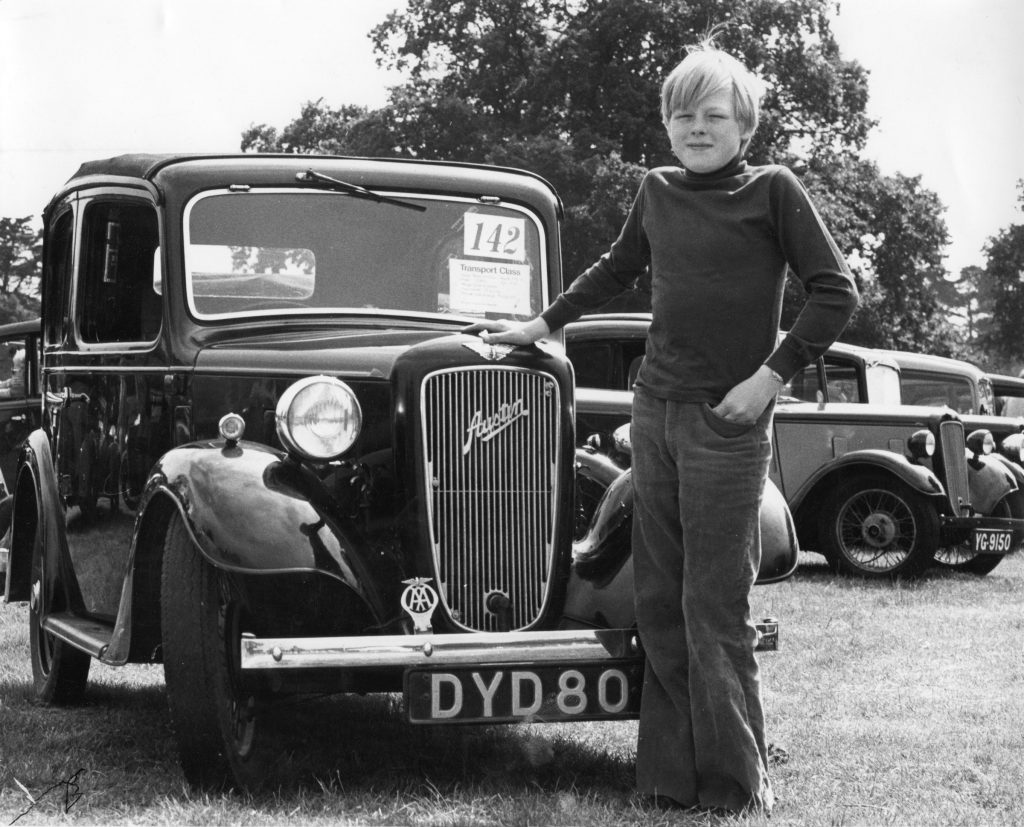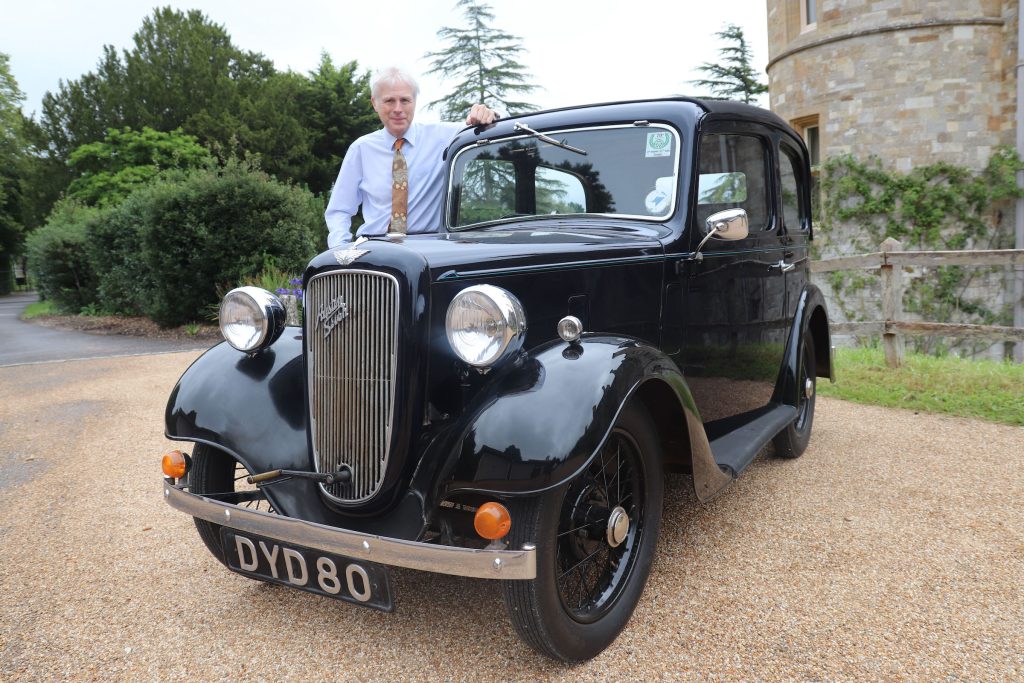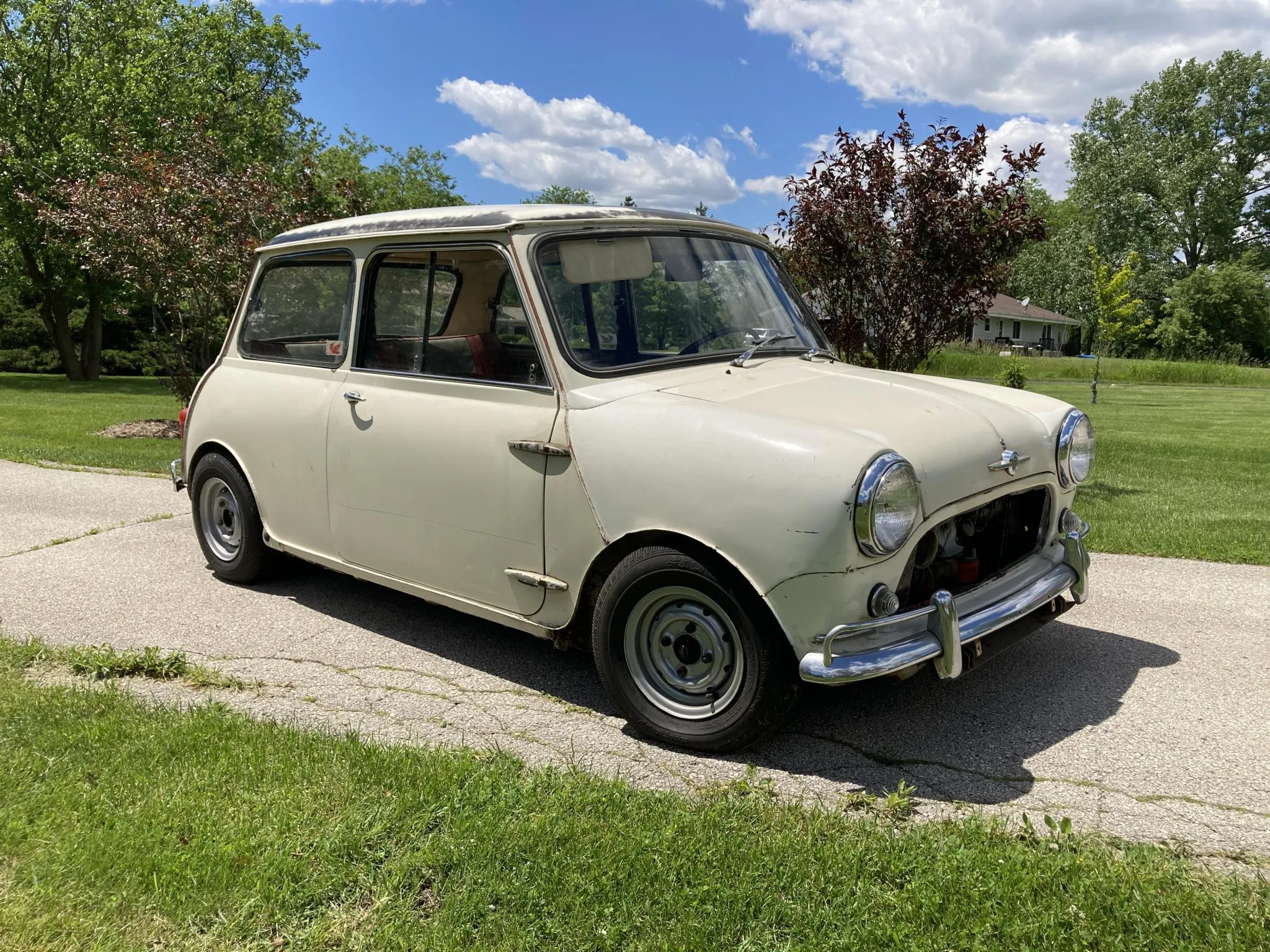“My father gave me the Austin Seven, my first road going car, without warning when I was 13 or 14 years old. It was in beautiful condition, I was only the second owner and, although I wouldn’t say I thrashed it, I probably didn’t quite treat it with the respect that one would show it now. I drove ‘DYD 80’ on many estate tracks and only once had a near accident when I underestimated the effectiveness of the brakes and almost ploughed into a hedge.
I was used to driving little children’s cars around the grounds [Lord Montagu grew up at Palace House on the 7000-acre Beaulieu Estate, home of the National Motor Museum] because I was allowed to borrow some of the Edwardian pedal cars from the museum. I also had a low-speed electric car and a Watsonian Cheetah Cub, which was basically a go-kart with a Jag-inspired body on it.

I felt slightly pressured into driving the Austin, a 1938 Pearl Cabriolet, because it appeared so suddenly; my father bought it from a man who had owned it from new and expected me to try it out straight away. To be honest, I did find that first drive a bit difficult and didn’t really enjoy the experience because it was the first time I’d tried to drive a car with a clutch but, once I’d got the hang of double-declutching, it wasn’t an issue.
Why my father chose an Austin Seven as my first proper car is a good question which, sadly, I never asked him. But, knowing him, he probably delegated the task to someone else and just said ‘can you get a cheap pre-war car for Ralph?’ [pronounced Rafe]. He could have bought me an old Mini but, for whatever reason, he thought a dark blue, four-seater Austin Seven with one windscreen wiper, no heater, and a roof that rolls back was the answer.

I was born in 1961 and, in my childhood, would occasionally see pre-war cars, including Austin Sevens, in daily use on the roads. They were usually quite close to the end of their lives and looked positively old fashioned. I must have been tempted to add some colourful go-faster stripes to mine but, out of consideration for the car’s original condition, I didn’t make many modifications. I don’t suppose the tyres on the car were original but just about everything else was, including the paintwork, upholstery and even the rubber mats, which was remarkable. One addition I did make was to fix a pole to the radiator from which I flew the Montagu Heraldic flag: it made the car look very official! Inside, I added stickers indicating the purpose of each switch and lever, but these did no lasting harm.
It saddens me to see almost any manufactured object destroyed when it’s considered that it’s come to the end of its life because of the skill, creativity and innovation that’s gone into it. The older the car is, the more handmade it is, and so I suppose it is the oldest cars that I regard with the greatest reverence.
The 747cc side-valve engine kicked out a grand sum of seven horsepower but driving it was always a lot of fun. Within a year, I took the car to the annual Austin Seven Rally at Beaulieu which is organised by the 750 Motor Club. With direct access to private tracks and roads around the estate I could drive for miles without going on the public highway and made many happy memories in it with my sister Mary and our friends – it even featured in a family film. On one occasion, driving up a hill on an estate track, the radiator boiled over. We happened to be close to a house with a swimming pool, so we crept into their garden with some cups and took some water out of the pool to top it up, as you do.
I think once you are physically big enough to sit at the wheel of a car and press the pedals, then why not start learning to drive? I would definitely encourage young people to learn in a manual car because it’s a very good skill to acquire; you never know when you might need to use it. The great advantage for me was that once I got to the age of 17, and I had a provisional licence, controlling a car was second nature, I just had to learn the traffic skills.

My half brother Jonathan, who is 14 years younger than me, also learnt to drive in the Seven but somehow managed to twist the chassis. Looking at the car, it wasn’t obvious but it was compromised, so she was exhibited in the museum on and off for a few years before I lost interest in the car and decided to sell her. Removing my stickers and clearing out old Lucozade bottles reminded me of the things I used to get up to. I felt mildly annoyed that my brother had damaged her, but my priorities were different back then, and we were short of storage space.
‘DYD 80’ was sold at a Bonhams auction to a man called Geoff Theobald for £4370 in September 2003. Geoff kindly made contact to reassure me that the car was in good hands and explain that he was making all the necessary repairs. It was only when she returned to Beaulieu to take part in the Austin Seven Rally that I realised I had lost a part of our family history.
In 2020, Geoff decided he wanted to sell her and I bought her back by private sale for around £10,000; there was a negotiation, but he had done a lot of work. The Seven made a very happy return to Beaulieu and now lives in my private garage at Palace House. Driving her doesn’t seem as exciting as it was in my teenage years but it’s always better that a car is used, and so she is used as part of the museum’s living history displays. It’s a nice new chapter.
Strictly speaking, the Seven isn’t the only car that I own which has been bought back into the family. When I inherited my father’s collection this included his 1925 Rolls-Royce Phantom 1 40/50 that had belonged to his father, my grandfather. This was bought back in the 1960s, but the Austin Seven is the only car I’ve personally bought back into the family, and this time, she’s definitely for keeps.”
Check out the Hagerty Media homepage for daily news, features, interviews and buying guides, or better still, bookmark it.









